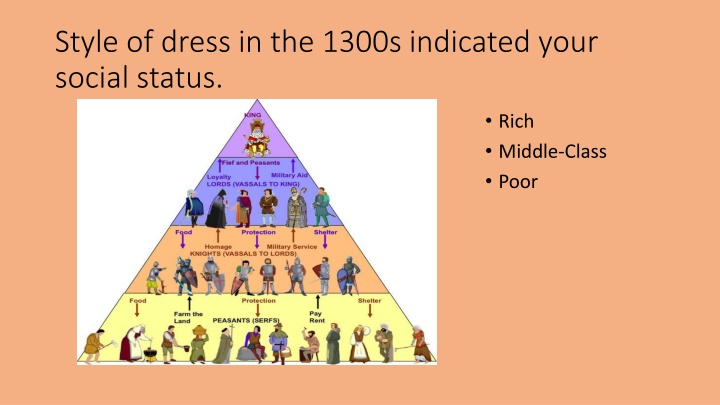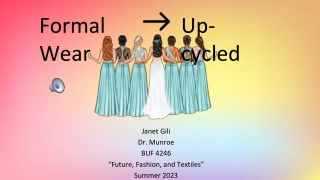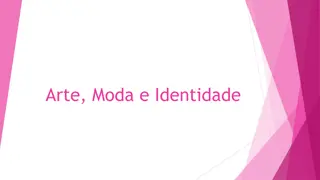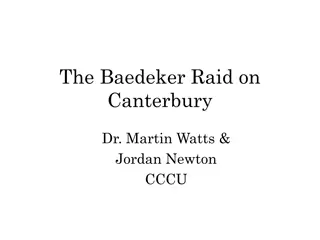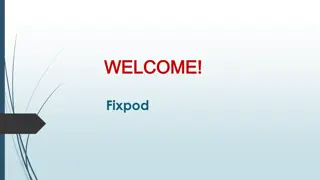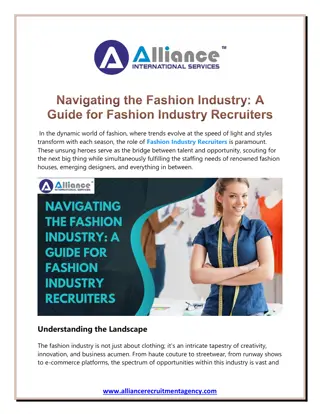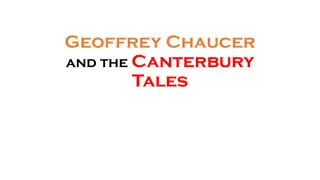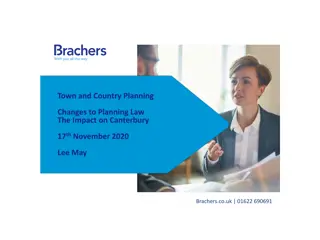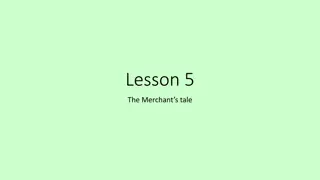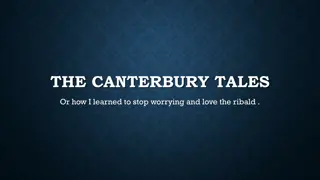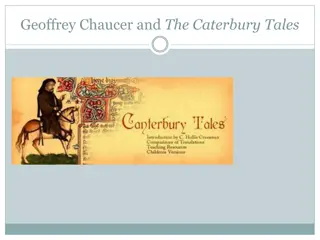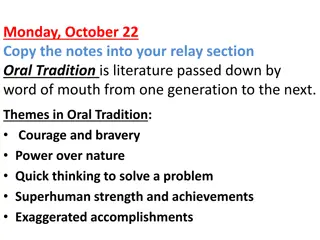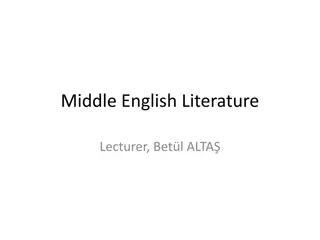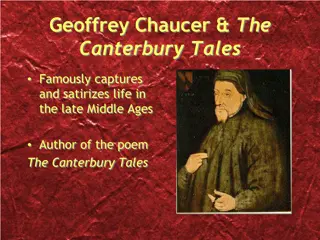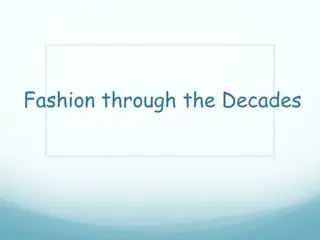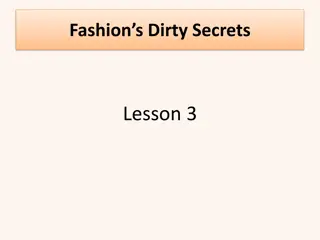Fashion and Social Status in the 1300s: Insights from The Canterbury Tales
Explore how the style of dress in the 1300s reflected social status, as portrayed in Chaucer's The Canterbury Tales. The characters' clothing choices, as described through direct and indirect characterization, provide valuable insights into their personalities, positions in society, and aspirations. Indulge in the literary focus on characterization and the use of indirect methods to portray the characters' appearances, behaviors, and thoughts, creating a rich tapestry of symbolism and social commentary.
Download Presentation

Please find below an Image/Link to download the presentation.
The content on the website is provided AS IS for your information and personal use only. It may not be sold, licensed, or shared on other websites without obtaining consent from the author.If you encounter any issues during the download, it is possible that the publisher has removed the file from their server.
You are allowed to download the files provided on this website for personal or commercial use, subject to the condition that they are used lawfully. All files are the property of their respective owners.
The content on the website is provided AS IS for your information and personal use only. It may not be sold, licensed, or shared on other websites without obtaining consent from the author.
E N D
Presentation Transcript
Style of dress in the 1300s indicated your social status. Rich Middle-Class Poor
The Canterbury Tales Reveal Fashion Laws No matter what you wear, or when you live, your clothes say a lot about who you are where you fit in what you aspire to be. Fashion choices show a character s... Personalities Position on the Social Ladder Attempts at modesty or deception
Direct Characterization Direct Characterization Direct Statements about the character EX. He was a great stout fellow big in brawn and bone.
The Prologue to The Canterbury Tales Literary Focus: Characterization Chaucer uses indirect characterization when he tells how each character looks and dresses This yeoman wore a coat and hood of green, And peacock-feathered arrows, bright and keen speaks and acts Her greatest oath was only By St. Loy! thinks and feels And gladly would he learn, and gladly teach.
Indirect Characterization Indirect Characterization Doesn t use Direct Characterization. Implied Characterization Uses Actions (What they do) Thoughts (What they think) Dialogue (What they say) Reactions (How others react to the character)
The Prologue to The Canterbury Tales Literary Focus: Characterization Chaucer uses indirect characterization when he tells how each character looks and dresses This yeoman wore a coat and hood of green, And peacock-feathered arrows, bright and keen speaks and acts Her greatest oath was only By St. Loy! thinks and feels And gladly would he learn, and gladly teach.
A Prologue A Prologue a separate introductory section of a literary or musical work.
The Prologue in The Canterbury Tales The Prologue in The Canterbury Tales Establishes a Frame Story A Frame Story is a literary technique that creates a story within a story An introductory or main narrative is presented for the purpose of setting the stage for a more emphasized second narrative
The Prologue to The Canterbury Tales Frame Story A frame story is a literary device that binds together several different narratives. It is a story (or stories) within a story. In The Canterbury Tales, the pilgrims journey is the outer story. The tales the pilgrims tell are stories within a story. The tales themselves also have thematic unity. [End of Section] [End of Section]
The Prologue to The Canterbury Tales by Geoffrey Chaucer Twenty-nine pilgrims are on their way to the shrine of Saint Thomas Becket in Canterbury. The time is April, and the place is the Tabard Inn in Southwark (SUTH erk), just outside London. London London Canterbury Canterbury [End of Section] [End of Section]
The Prologue to The Canterbury Tales Reading Skills: Analyzing Style: Key Details Chaucer had twenty-nine characters to introduce, so he couldn t develop any one character at great length. Instead, he provided a few well- chosen details that would make each character stand out vividly.
The Prologue begins in The Spring The Prologue begins in The Spring Imagery and Themes of the First 18 Lines The Prologue begins with references to beginnings Many images of rebirth and renewal April itself is often presented as a time of rebirth Spring is the perfect time to start a pilgrimage
The Characters The Knight The Squire The Yeoman The Nun (Prioress) The Monk The Friar The Merchant The Oxford Cleric The Sergeant at the Law The Franklin The Tradesmen - The Haberdasher, The Dyer, The Carpenter, The Weaver, The Carpet-maker The Cook The Doctor The Woman of Bath The Parson The Plowman The Miller The Manciple The Reeve The Summoner The Pardoner The Host (The Wife of Bath)
The Characters The Characters Some Characters are idealized meaning some appear perfect examples of their type Some characters are frauds and con artists who show some of the typical examples of their type. These characters highlight behaviors that should be copied. These characters highlight behaviors to be avoided.
